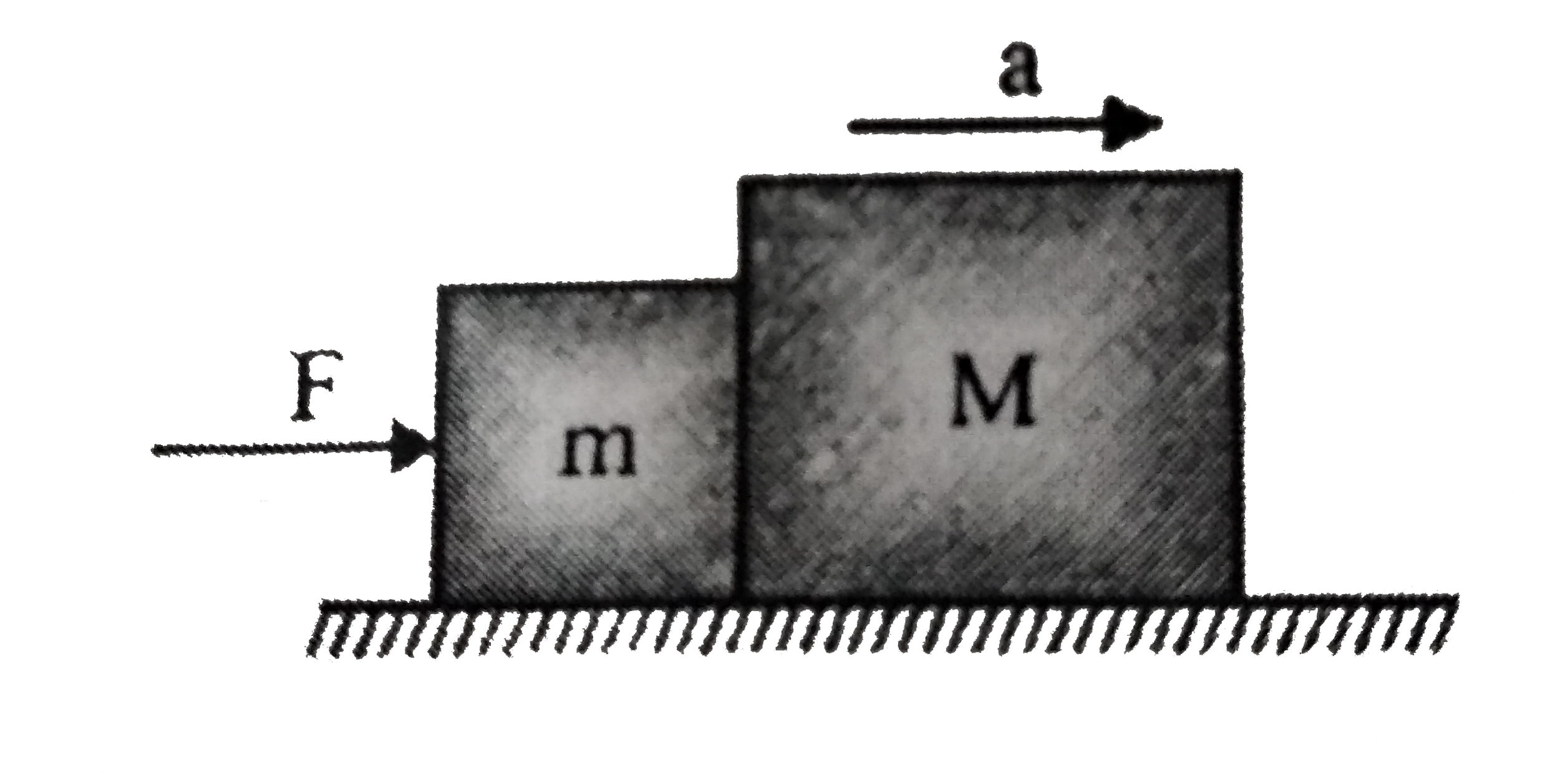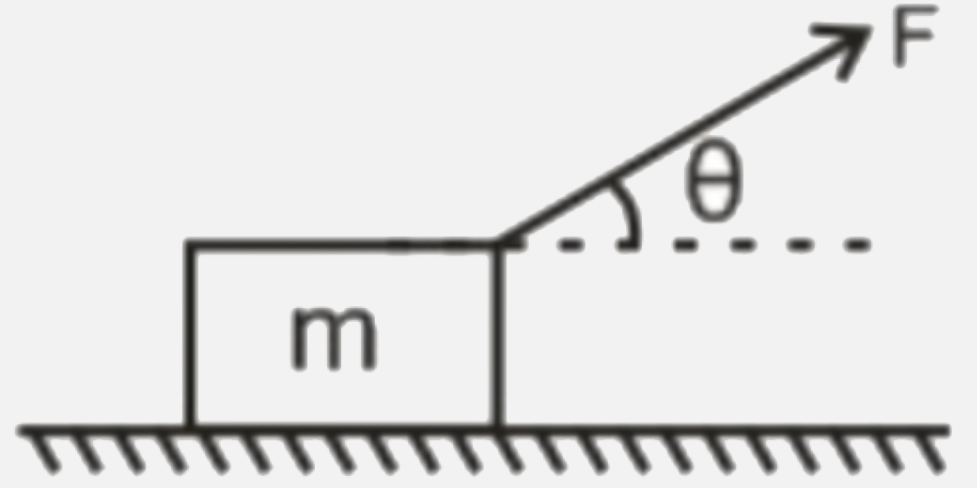A block of mass 2 kg placed on a long frictionless horizontal table is pulled horizontally by a constant foerce F. It is found to move 10 m in the first two seconds. Find the magnitude of F.
To solve the problem step by step, we will follow these steps:
Step 1: Identify the given data
- Mass of the block, m=2kg
- Distance moved, s=10m
- Time taken, t=2s
Step 2: Use the equation of motion to find acceleration
We will use the second equation of motion:
s=ut+12at2
Since the block starts from rest, the initial velocity u=0. Thus, the equation simplifies to:
s=12at2
Substituting the known values:
10=12a(22)
This simplifies to:
10=12a(4)
10=2a
Now, solving for a:
a=102=5m/s2
Step 3: Calculate the force using Newton's second law
According to Newton's second law, the force F is given by:
F=m⋅a
Substituting the values of mass and acceleration:
F=2kg⋅5m/s2
F=10N
Final Answer
The magnitude of the force F is 10N.
---
- Mass of the block, m=2kg
- Distance moved, s=10m
- Time taken, t=2s
We will use the second equation of motion:
s=ut+12at2
Since the block starts from rest, the initial velocity u=0. Thus, the equation simplifies to:
s=12at2
Substituting the known values:
10=12a(22)
This simplifies to:
10=12a(4)
10=2a
Now, solving for a:
a=102=5m/s2
According to Newton's second law, the force F is given by:
F=m⋅a
Substituting the values of mass and acceleration:
F=2kg⋅5m/s2
F=10N
The magnitude of the force F is 10N.
Topper's Solved these Questions
- NEWTON'S LAWS OF MOTIONBOOK - HC VERMA ENGLISHCHAPTER - NEWTON'S LAWS OF MOTIONEXERCISE - Questions for short Answer
17 Videos
- NEWTON'S LAWS OF MOTIONBOOK - HC VERMA ENGLISHCHAPTER - NEWTON'S LAWS OF MOTIONEXERCISE - Objective -2
9 Videos
- LAWS OF THERMODYNAMICSBOOK - HC VERMA ENGLISHCHAPTER - LAWS OF THERMODYNAMICSEXERCISE - All Questions
64 Videos
- PHYSICS AND MATHEMATICSBOOK - HC VERMA ENGLISHCHAPTER - PHYSICS AND MATHEMATICSEXERCISE - Question for short Answer
14 Videos
Similar Questions
A block of mass 2.5kg is pushed 2.20m along a frictionless horizontal table by a constant force 16 N directed 45∘ above the horizontal. Determine the work done by.
(a) the applied force,
(b) the mormal force exerted by the table,
(c) the force of gravity and
(d) determine the total work done on the block.
View SolutionA block of mass m is placed on a rough horizontal floor and it is pulled by a ideal string by a constant force F as shown. As the block moves towards right the friction force on block

View SolutionA block of mass M placed on a frictionless horizontal table is pulled by another block of mass m hanging vertically by a massless string passing over a frictionless pulley. The tension in the string is :
View SolutionTwo block of masses m1andm2 are lying on a frictionless horizontal table connected by a light string m2 is pulled by horizontal force F. Calculate the tension in the string .

View SolutionA block of mass M is pulled along a horizontal frictionless surface by a rope of mass m as shown in A horizontal force F is applied to one end of the rope. Find
(a) the acceleration of the rope and block
(b) the force that the rope exerts on the block
(c) the tension in the rope at its mid point

View SolutionTwo blocks of mass = 2 kg and M = 5 kg are in contact on a frictionless table. A horizonatal force F (= 35 N) is applies to m. Find the force of contact between the block, will the force of contact remain same if F is applied to M ?

View SolutionTwo blocks of masses M = 3 kg and m = 2 kg are in contact on a horizontal table. A constant horizontal force F = 5 N is applied to block M as shown. There is a constant frictional force of 2 N between the table and the block m but no frictional force between the table and the first block M, then acceleration of the two blocks is

View SolutionA uniform rope of mass (m) and length (L) placed on frictionless horizontal ground is being pulled by two forces FAandFB at its ends as shown in the figure. As a result, the rope accelerates toward the right.

Acceleration (A) of the rope is
View SolutionA wooden block of mass m resting on a rough horizontal table is pulled by a force F as shown in the figure. If μ is the coefficient of friction between block and table, its acceleration will be

View SolutionA block of mass m1 resting on a frictionless horizontal surface is connected to a spring of spring constant k that is anchored in a near by wall. A block of mass m2 is placed on the top of the first block. The coefficient of static friction between the two blocks is μ Assuming that the two blocks move together as a unit, find the period of oscillation of the system and also find maximum oscillation amplitude that permits the two bodies to move as a unit.
View Solution
